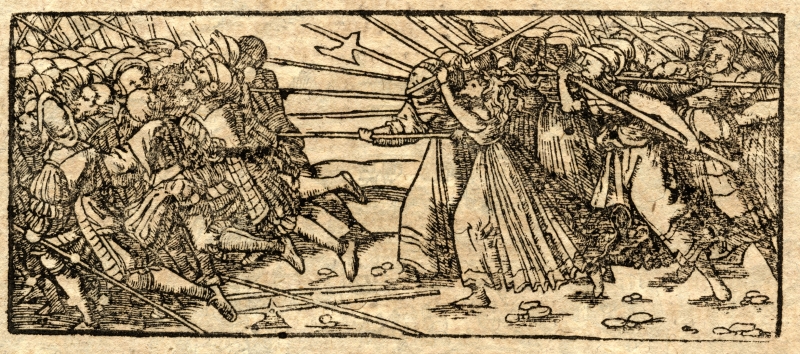
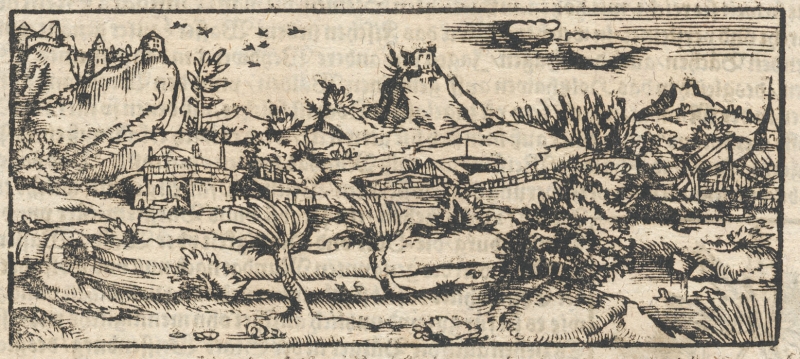
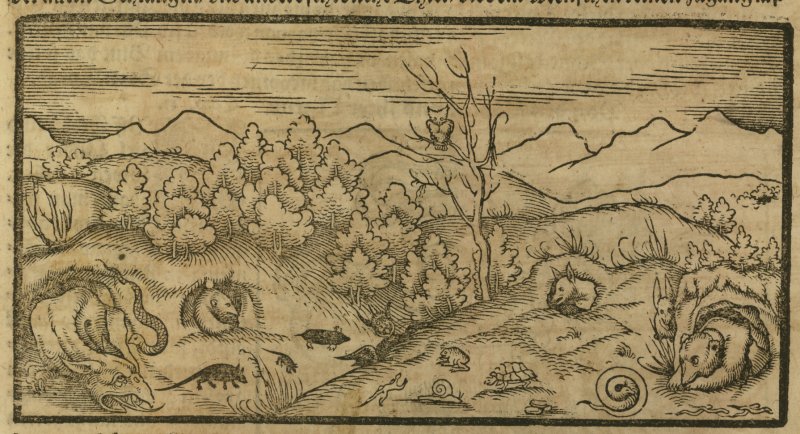
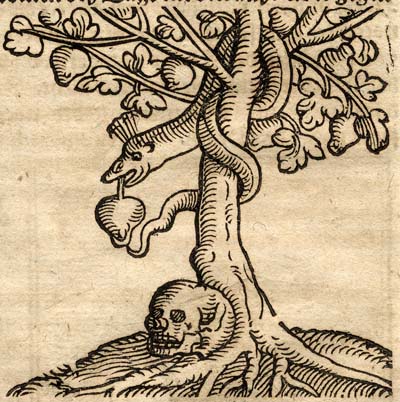
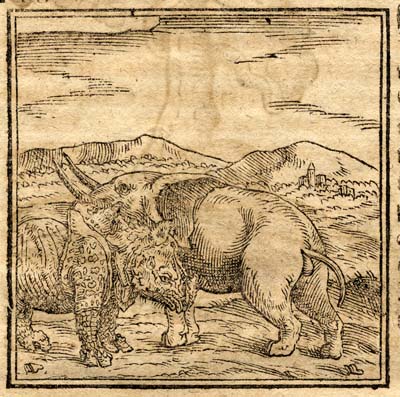
This image is what I assume to be "the tree of knowledge of good and evil" from the book of Genesis. The curious part is that it is in the middle of a section that appears to be about Africa. The tree, serpent, and apple is the image on the other side of the leaf from the elephant and rhinoceros. The trunk of the tree is visible above the elephant's head and the tail of the snake holding the apple is above his back.
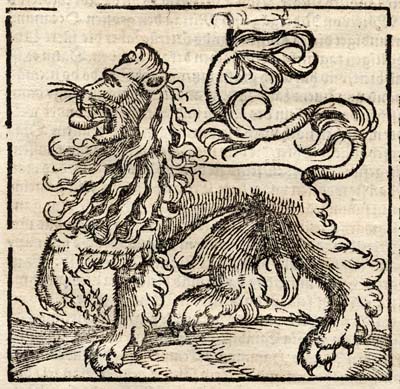
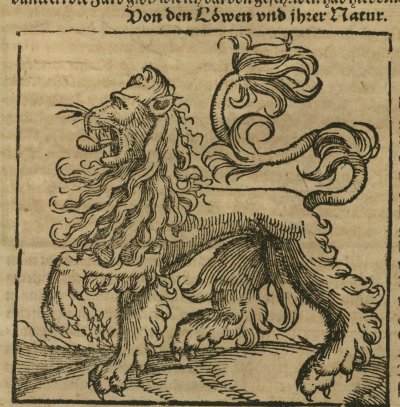
This is two different impressions from the same woodblock. Repairs and changes are evident.
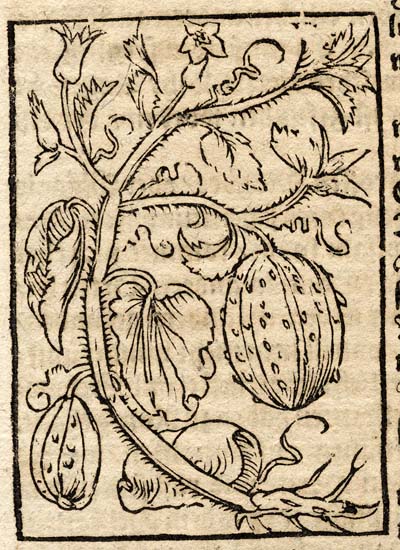
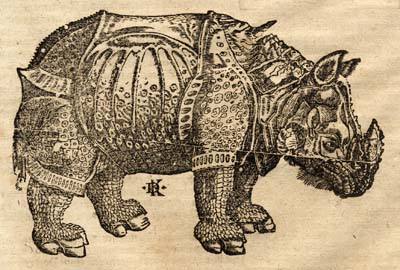
Like many of the images in Munster's text, I do not know what this "thistle melon" is meant to be. Time does not permit me to translate the text. I cannot speak or read any of the languages that Cosmographia was published in, so it is a painful process with a dual-language dictionary to say the least. When translating the Latin versions I tend to have better luck as the language appears (to me) to have been more static in the intervening years.
The rhinoceros is a copy of the 1515 version by Albrecht Durer (1471 - 1528) as done by David Kandel (1520 - 1592). Note the initials of the engraver (DK) between the legs. The details are nearly exactly the same between the two engravings. Durer often signed his engravings with a small D within a "squared" A. (He signed his Rhinocerus (Rhinocervs) just above the head.) I wonder what the motivation was for Kandel to sign his, as most would not have recognized that it was a copy without that clue. Standards of plagiarism and copyright were clearly different in the 16th century than they are today.